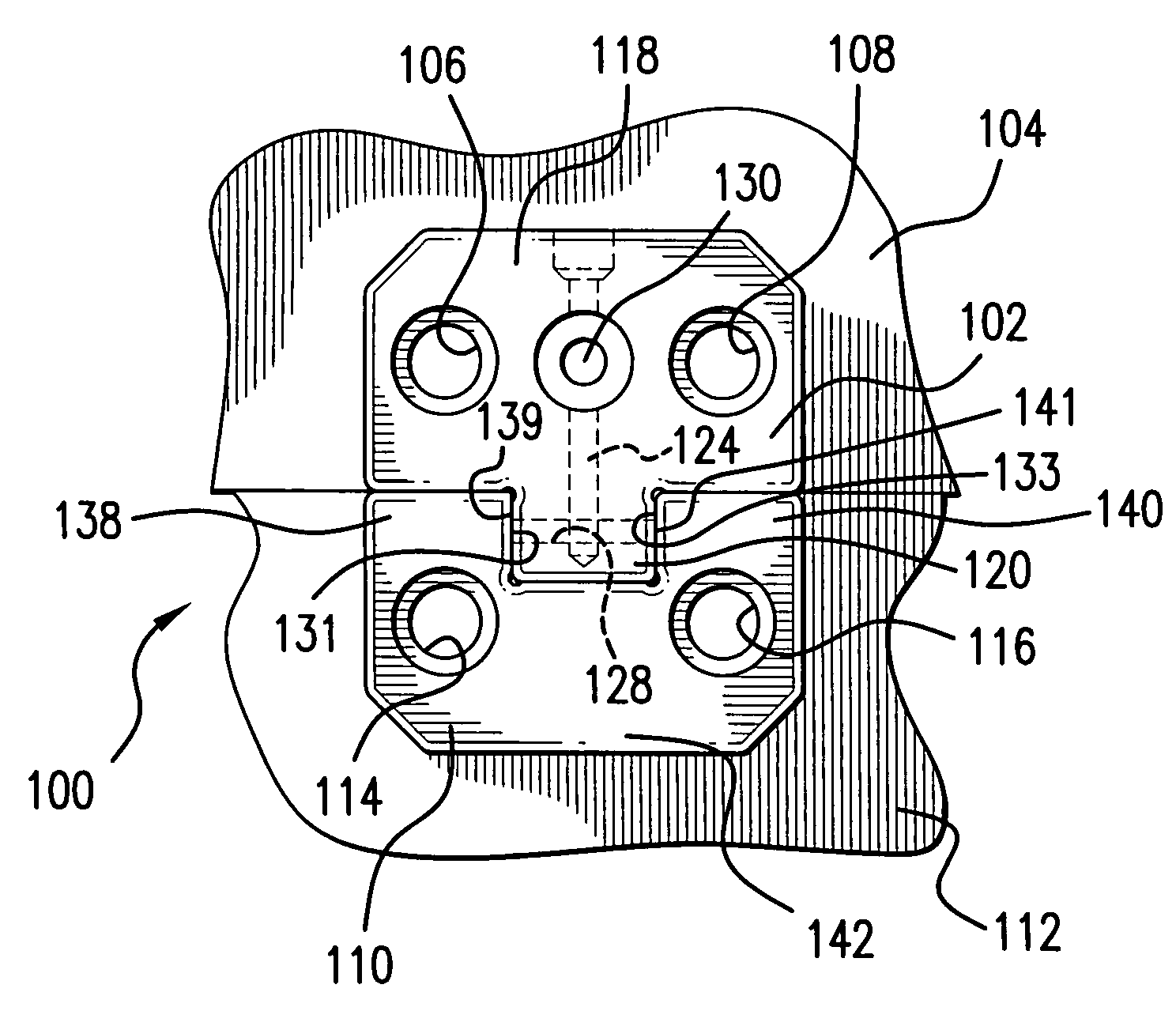Mold lock with lubricating grooves
a technology of lubricating grooves and mold locks, which is applied in the direction of dough shaping, manufacturing tools, applications, etc., can solve the problems of mold locks that cannot meet tolerances, mold lock alignment degrades and becomes less accurate, and mold locks are subject to wear and tear. , to achieve the effect of reducing the harmful line-to-line metal conta
- Summary
- Abstract
- Description
- Claims
- Application Information
AI Technical Summary
Benefits of technology
Problems solved by technology
Method used
Image
Examples
Embodiment Construction
[0025]FIGS. 1 and 2, designated as PRIOR ART, show a conventional mold assembly 10, comprising a first mold half 12, a second cooperating mold half 14, and a base 16 for supporting the mold halves. An injection port 18 in first mold half 12 introduces the molten plastic into the interior of the mold assembly, and a die in the cavity (not shown) defined in the interior of the mold determines the shape of the object being molded. The mold halves are movable relative to one another, so that the cavity is sealed during the molding process, but are separated so that the molded object can be removed at the end of the molding process.
[0026]In order to maintain the mold halves in alignment, despite the considerable pressure exerted upon the mold halves, and the thermal differential between the first and second mold halves, which can approach 20° F., mold locks are employed on each side of the mold assembly 10. Mold locks 20, 22 are shown in FIG. 1 and additional mold locks (not shown) are e...
PUM
| Property | Measurement | Unit |
|---|---|---|
| Width | aaaaa | aaaaa |
| Thermal properties | aaaaa | aaaaa |
Abstract
Description
Claims
Application Information
 Login to View More
Login to View More - R&D
- Intellectual Property
- Life Sciences
- Materials
- Tech Scout
- Unparalleled Data Quality
- Higher Quality Content
- 60% Fewer Hallucinations
Browse by: Latest US Patents, China's latest patents, Technical Efficacy Thesaurus, Application Domain, Technology Topic, Popular Technical Reports.
© 2025 PatSnap. All rights reserved.Legal|Privacy policy|Modern Slavery Act Transparency Statement|Sitemap|About US| Contact US: help@patsnap.com



